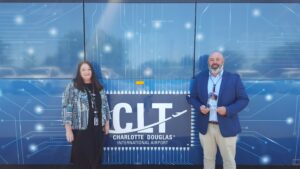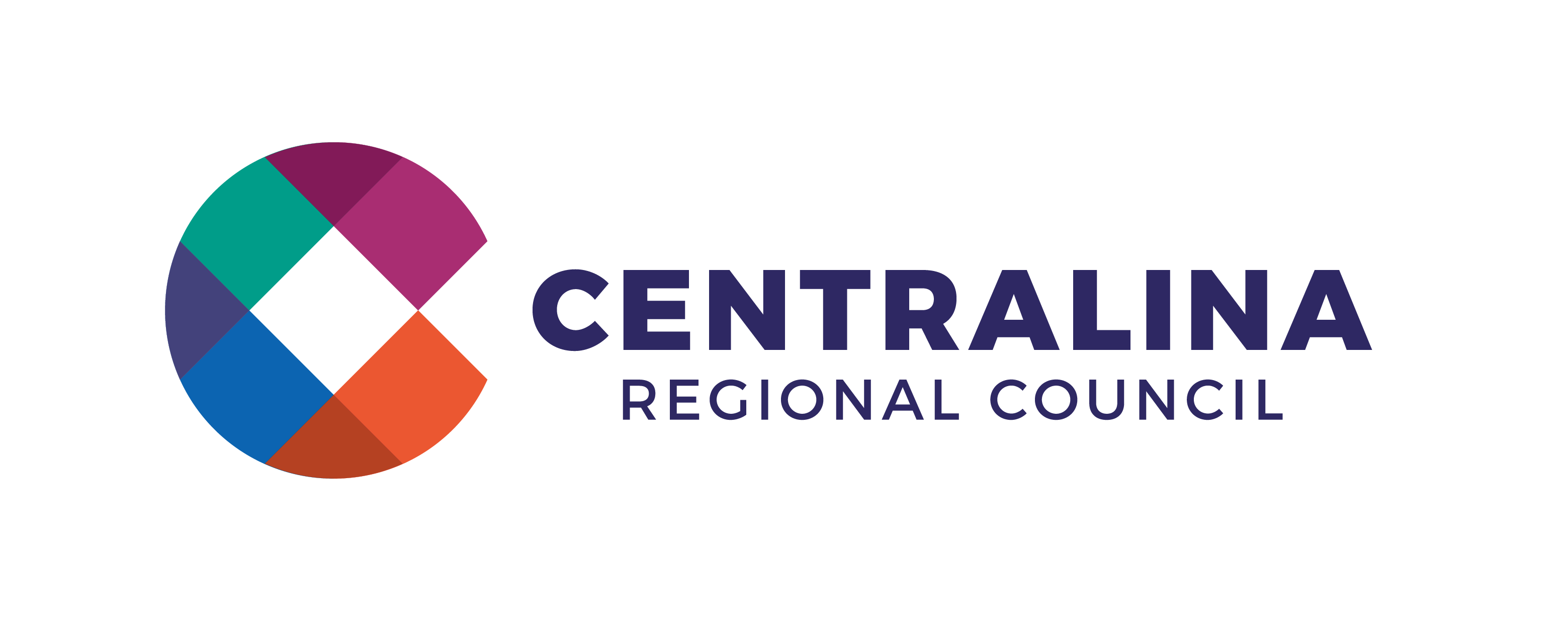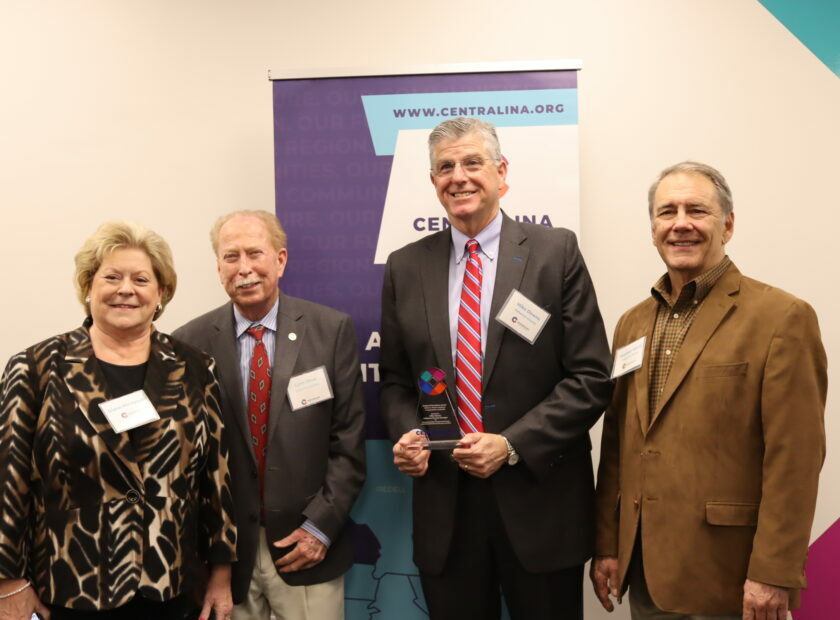In March 2022, Centralina Regional Council awarded the Charlotte Douglas International Airport (CLT) Electric Vehicle (EV) Bus Fleet the Clean Cities Award at our annual Region of Excellence Awards. The CLT EV Bus Fleet provides sustainable solutions to employees, tenants, passengers, the local community and region. According to the CLT’s sustainability webpage, the team plans to “become a leader in environmental stewardship by maintaining a balanced, integrated approach to future development and operations based on economic stability, environmental sustainability and social responsibility.”
CLT’s fleet has clearly been a leader in cultivating clean cities by dedicating time and resources into building its EV fleet to be both clean and efficient. With vehicles ranging from model year 2013 to 2021, the team led by Scott Kincaid has implemented clean fuels and fuel alternatives to every variety of airport vehicle, satisfying virtually every need. This effort involves replacing older, dirtier vehicles with newer ones to reduce emissions and save on costs of ownership.
Project Highlights
 Charlotte Douglas International Airport implemented many changes within its fleet, all working toward the Clean Cities Coalition mission. CLT established the foundation to use a variety of different clean fuels including E85, propane and 100% electric to diversify its fleet. The full fleet contains 51 various vehicles, including buses, cars and vans that are either fully electric or hybrid electric vehicles.
Charlotte Douglas International Airport implemented many changes within its fleet, all working toward the Clean Cities Coalition mission. CLT established the foundation to use a variety of different clean fuels including E85, propane and 100% electric to diversify its fleet. The full fleet contains 51 various vehicles, including buses, cars and vans that are either fully electric or hybrid electric vehicles.
CLT’s fleet also has seen many fuel economy improvements and idle reduction improvements. Most notably, the fleet added five 35′ Proterra Catalyst buses in 2021, which have been driven over 100,000 miles in their first year of service. Five New Flyer Excellsor 35′ buses were recently added to the fleet and have just entered service, with a plan to purchase an additional five electric buses in 2022. These all-electric buses will contribute significantly to the goal of replacing all 70 diesel powered buses with 50 electric buses over the next seven to ten years.
Results
Fuel economy improvements to eight of the airport’s light-duty pickups means better gas mileage and lowered fuel costs. An anti-idle policy implemented on 126 of CLT’s light vehicles has reduced gasoline gallon usage by almost 40,000 gasoline gallon equivalents (GGEs). This statistic does not consider another idle reduction policy for 65 of CLT’s heavy-duty vehicles, which equates to another 35,000 GGEs reduced (as of 2021).
The CLT team has worked closely with the Centralina Clean Fuels Coalition to accomplish many of these milestones, including many of their idle reduction and fuel economy improvements. The contribution toward reducing idle time facilitated by the coalition has been immense: up to 75,000 GGEs reduced in 2021! CLT also has worked with the City of Charlotte to accomplish many goals highlighted for the airport in the 2020 City of Charlotte Strategic Energy Action Plan.
Takeaways
We interviewed Fleet Manager Scott Kincaid to learn more about the sustainability impact that CLT’s EV Bus Fleet has had on the greater Charlotte area his recommendations for communities looking to embrace environmentally friendly energy solutions.
What impact do you hope this program has on the community in the future and in what ways do you hope to inspire other communities to progress their innovation?
The hope is we can be a standard bearer for how airport transportation looks in the future. With this technology being relatively new, if we create a proof of concept and identify substantial return on investment compared to traditional fossil fueled options, it could encourage other airports or even similar non-aviation institutions like universities and school systems to start their own transitions and EV programs.
What are some issues you have encountered in transitioning to EV and how have you navigated these?
The biggest issue we have faced is the lack of available training and formal education for technicians. New electric vehicles don’t come with technicians and developing that skill set takes time. We have been fortunate in that some of our staff has been eager to learn the new technology and has helped us maintain the fleet during the transition. Ultimately the change is going to require a substantial shift in how technicians are trained and the creation of formal certifications or degrees in electric vehicle maintenance. I’d love to see some of the industry’s professional organizations such as ASE [Automotive Service Excellence] and local community colleges incorporate electric vehicle certifications and training programs to help folks make the transition.
What is some advice you would give to communities who are interested in improving the sustainability of their public transportation?
Don’t be scared to take a bite. The hardest part is getting started. There is a lot of learning that takes place early and lessons will be learned that will pay dividends as programs develop. The technology is developing exponentially so if you’re waiting for somebody else to do it first, you’re already behind.
What are the future opportunities you see in EV and public transportation and how are you encouraging others to join in the innovation?
The future really is unpredictable, it seems like every week there is a new product announcement or launch. This makes strategic planning difficult, but there is never going to be a perfect time to jump in. The biggest opportunity is going to be developing in-house training and bringing in young people. Our industry is dominated by an aging population, the new technology is revolutionary and exciting in that it has the potential to bring in a younger generation who can continue to develop and improve the product.
CLT’s fleet has been a leader in cultivating clean cities by dedicating time and resources into building its EV fleet to be both clean and efficient. Their efforts have been successful in moving Charlotte towards sustainable solutions that create a cleaner community for all. If you want to learn more about this organization’s comprehensive sustainability plan, upcoming projects or more about their community impact you can visit their website here.


